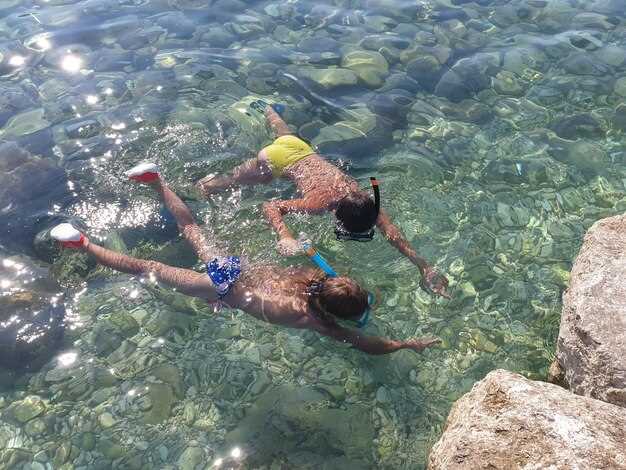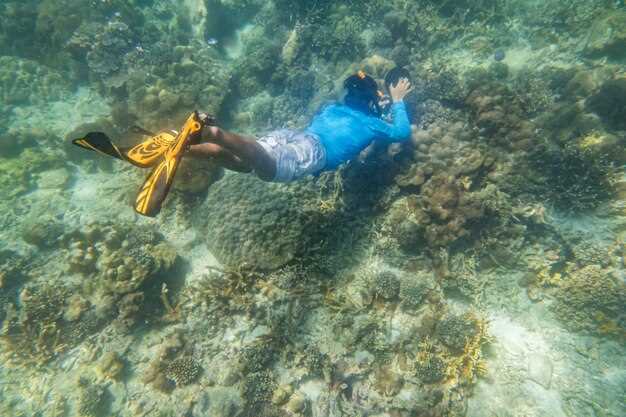Check the calm coves along the northern Caribbean side to begin this journey, where visibility commonly reaches 15–30 meters on clear mornings and water sits around 25–28°C. This snorkeling session offers a first glimpse of vibrant reef life, including small sharks, parrotfish, and the occasional turtle as shadows drift over the reef banks.
Local operators on this route offers flexible itineraries; getmyboat platforms list half-day and full-day charters with patient captains who respect reef habitats. For seekers of cultural exchanges, communities along the coast open doors after the morning dive, turning routine routes into unforgettable conversations about tradition and reef stewardship.
In deeper areas you’ll encounter a mosaic of reef inhabitants: bright surgeonfish, wrasse, groupers, and sparkling schools that shimmer in strong visibility. Time spent watching snorkeling routes unfold reveals unique moments with curious turtles and juvenile rays–moments that become glimpses into an underwater world discovered by patient divers.
If you’re seeking an off-the-beaten-path itinerary, several reef halos off the main routes reward explorers with gems of life that locals have long discovered. Each site offers time to observe sea turtles, nurse sharks, and vibrant corals before the crowds drift in after breakfast, turning a routine morning into an unforgettable memory.
Plan with practical steps: check weather windows, coordinate with a local skipper, and book a morning slot that aligns with turtle feeding time. The cultural energy of coastal towns enhances the experience, and you can enjoy quiet coves between visits to busy reefs–the kind of unique sequence that stays with you long after you return.
Panama Snorkeling Essentials and Hot Spots

Start with a 4-hour charter from Bastimentos or Bocas Town to coves around Isla Zapatilla Grande and the nearby Carenero bank, areas discovered to host healthy coral communities. Bring your own mask and fins if you have a good fit; otherwise rentals are available from local shops. Water is calm in the morning, revealing a fascinating underwater exploration beneath the surface. In the dry season (December–April) visibility often reaches 15–25 meters; the wet season (May–November) can bring brief showers, then clear water resumes. To dodge crowds, depart at dawn and follow a route that stays away from the busiest channels.
Across the Gulf of Chiriquí and Coiba National Park, off-the-beaten-path itineraries uncover reefs with high biodiversity. From Santa Catalina, a 1.5–2.5 hour boat ride is typical; park permits and staff are arranged by the operator. Manta sightings occur near outer drop-offs; youre likely to encounter turtles, large parrotfish, and schooling snappers in shallower zones. Currents are stronger here, so stay close to your guide and carry a dry bag and reef-safe sunscreen.
Where weather allows, Islas de San Blas and other archipelago zones expand your options, offering quiet coves and clear water. The ecosystem is dynamic, with elusive species occupying multi-layer habitats; exploring at dawn often rewards the most vibrant color and activity. Off-the-water conditions can shift quickly, so check the forecast and communicate with your captain about wind and wave direction.
Equipment and planning tips: items to bring include mask, snorkel, fins, reef-safe sunscreen, a rash guard, and a lightweight dry bag. Rentals are available at lodges and tour offices if you dont bring your own gear. Try to keep your day simple with a 3–4 hour window to enjoy the calm coves and underwater exploration, then head back before the heat increases and crowds build.
Best Snorkeling Spots in Panama: Top Picks
Begin at Coiba National Park for your first exploration beneath crystal waters–a paradise where colors explode and starfish dot the reef.
From Coiba to the Gulf of Chiriquí, expect incredible experiences with sea turtles, gliding rays, and graceful silhouettes skimming over elusive corals.
On the chiriqui coast, Islas Damas and nearby reefs await; witness wonders, colors, and starfish while you learn where to anchor your mask-and-fins for the most rewarding encounters.
Bocas del Toro’s Bastimentos and Carenero offer calmer coves with abundant life; islands fringe the coastline where turtles glide past and colors flash across reefs, inviting you yourself to witness an authentic heritage beneath the waves and make unforgettable memories.
Seasonal timing matters: the dry season, roughly December through April, brings clearer visibility and calmer waves, making Coiba’s and Chiriquí Gulf sites especially accessible for a focused exploration of underwater treasures.
Hidden Gems: Secret Snorkeling Spots in Panama
Kick off with Bastimentos’ north coast coves; choose a local skipper for a compact 2–3 hour exploration; mornings deliver safe conditions with waves calm enough for beginners; dont time your trip for weekends; during these sessions, gliding past shallow reefs and watching dolphins following the boat creates a true paradise; beneath the surface, a tapestry of parrotfish and tang colors fills your view; this home of underwater life invites you to enjoy yourself.
Offshore, Gulf of Chiriquí hosts reefs near Isla Cebaco; Islas Malena comprise a small cluster of islands; water remains clear, coral vibrant; visibility reaches 15–25 meters in the dry season; plan a small-group outing led by a local from Pedasi or Boca Chica; these routes stay close to protected reefs; even beginner-friendly visitors should join.
Caribbean coast yields truly secluded coves near Isla Grande; mangrove channels shelter gentle currents; a 90-minute glide reveals pelagics, damselfish, plus quiet seagrass meadows; during migration, dolphins surface nearby; sea birds soaring overhead.
Practical notes: check tides, currents, wildlife rules; book small-group tours operated by a local to keep impact minimal; keep distance from coral; refrain from touching turtles or dolphins; respect protected zones; experience matters.
Packing tips: mask; fins; reef-safe sunscreen; hat; water; lightweight dry bag; dont forget a light snack for longer exploration; bring home photos to relive this paradise.
What to Bring for Snorkeling in Panama: Gear, Pack List, and Safety

Which piece matters most is a mask with a snug silicone skirt, tested at home before departure to guarantee a good seal on sandy or rocky entries in coves.
Keep the kit compact for the opportunity to move between islands; plenty of biodiversity to explore; safe, licensed tours when preferred.
Important: choose light, quick-dry clothing for surface comfort; reef-safe sunscreen; hat for shade; hydration plan for the day.
- Mask with adjustable strap; silicone skirt; nose pocket for easy equalizing
- Breathing tube (snorkel) with splash guard; purge valve optional
- Fins of medium stiffness; choose size that fits boot with dry socks
- Rash guard or shorty wetsuit; sun protection for ultraviolet rays
- Dry bag for valuables; reef-safe sunscreen; lip balm with SPF 30+
- Hydration gear: water bottle; compact towel; water shoes for rocky entry
- Underwater camera or compact waterproof housing; extra memory cards
- First-aid essentials: antiseptic wipes; adhesive bandages; seasickness tablets; personal meds
- Wide-brim hat; polarized sunglasses with strap; lightweight protective clothing
Pack for the day on tours and excursions:
- Water bottle; 1–2 liters per person; sip regularly
- Sunscreen: reef-safe SPF 30+; lip balm
- Shade: hat or light canopy
- Footwear: water shoes or reef-safe sandals
- Camera gear: waterproof case; spare batteries
Safety notes: keep a buddy within sight; monitor tides; observe currents; avoid touching coral, sponges, or wildlife; follow local rules in protected coves; licensed operators when unsure; getmyboat options exist for safe experiences; stay visible on the surface with a signaling device if drifting is possible.
Contadora, the Chiriquí coast, offers incredible biodiversity; heritage of coastal communities; plenty of coves to explore; one memorable spot near a reef edge reveals manta sightings; gems discovered here include vibrant corals and curious reef fish.
More opportunities vary with season; licensed operators optimize safety; learning; cultural exchanges with local guides; island heritage is showcased; paradise awaits in secluded coves; gems discovered along the route include manta sightings, thriving coral gardens.
When to Snorkel in Panama: Seasons, Tides, and Visibility
Start with the dry season window, December through April: warm water, clear visibility, calm waves, making each snorkel effortless. This window offers incredible colors beneath the surface; plenty of opportunities for exploring isla coves, chiriqui reefs, coastal lagoons; book tours early, rentals fill fast, youre time is precious.
During dry season, visibility peaks along chiriqui coast; youre time to glimpse dolphins, starfish, colors, corals.
Tides influence planning: neap tides keep currents mild; high water brings deeper channels; low tides reveal reef flats suitable for slow exploration.
Isla experiences vary by spot: Coiba, Bocas del Toro, chiriqui offer gems; conditions shift with seasons, trade winds; tours with local operators provide reliable insights for exploring experiences.
What to bring: items like reef-safe sunscreen, rash guard, snorkel gear if you prefer personal items; rentals available via tours; be ready with items; book early. For snorkeling experiences, choose shallow reef routes, prepare towels, water, a dry bag.
Beneath the surface, colors burst; starfish dot sand; dolphins surface nearby; turbulent waves carry spray across coral gardens; a glimpse of dolphins adds to the magic; these gems invite exploring paradise.
Practical plan: mornings during December through April deliver clearer visibility, warmer water, calmer seas; rainy months bring currents, reduced colors.
Marine Life to Spot While Snorkeling in Panama: Species You May Encounter
Begin exploration at Coiba National Park, where the waters offer a mesmerizing display of biodiversity. During calm mornings, guided tours will take you to sheltered reefs, allowing you to observe a diverse array of species through clear visibility. Rentals for snorkeling gear are available on-site or via getmyboat, so you can focus on the experience only.
Expect graceful parrotfish and angelfish weaving through corals; green and hawksbill sea turtles glide by, while reef and nurse sharks patrol slopes. Spotted eagle rays soaring overhead and occasional manta rays drift through the blue. Moray eels peek from crevices and octopuses explore the reef at dawn or dusk. Smaller residents like damselfish, wrasse, and gobies add color to every pocket of water.
Check currents and tides with a local guide; exploration time varies by site, even on calm days. The bocas region’s channels can yield more encounters, including tiny seahorses and crustaceans tucked into coral caves. The gems of this realm honor the sea’s complexity.
For a well-rounded route, seek a boat plan that connects bocas islets with Coiba’s protected patches. These waters present a paradise of colors and forms; soaring silhouettes of rays and graceful swimmers punctuate the day. Tours that emphasize conservation and small groups will allow safer, more respectful experiences with wildlife and will improve your odds of a slower, more intimate exploration of this park’s life.

 Best Snorkeling in Panama – Top Spots and Marine Life Guide">
Best Snorkeling in Panama – Top Spots and Marine Life Guide">
